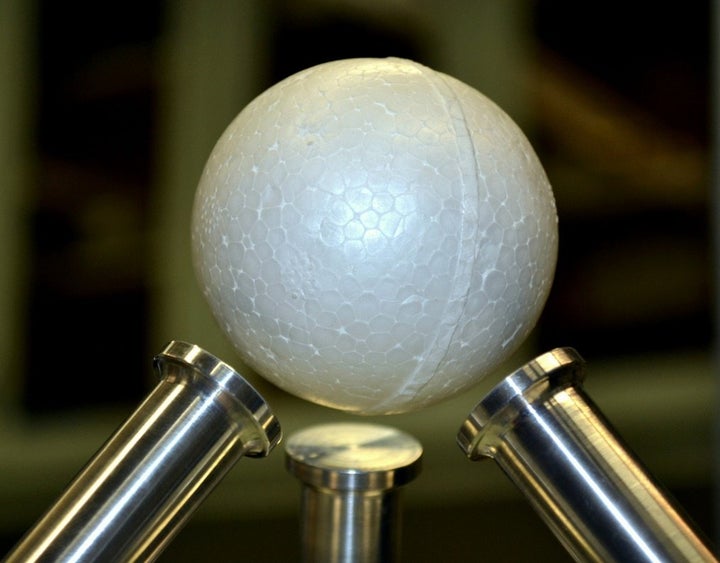
Scientists have overcome a major hurdle in the quest to levitate large objects with ultrasound.
Previously, researchers had struggled to float an object larger than the wavelength without being very choosy about what that object was. Only wire-like and planar objects would do the job.
But a research team at University of São Paulo in Brazil and Heriot-Watt University in Edinburgh has now successfully levitated a polystyrene ball 3.6 times bigger than the wavelength lifting it.
Engadget reports that the key is to introduce a standing wave into the space between the ultrasonic traducer and the object, rather than a pressure node between the traducer and the reflector.
In previous experiments, researchers could only create a vertical force and used a pin to stop objects from drifting off laterally. But in this study, scientists were able to alter the set up of the traducers and still keep the object in position.
The University of Sao Paulo’s Marco Andrade told Phys.org: “By using three ultrasonic transducers in a tripod configuration, we obtain vertical and lateral acoustic forces. Consequently, we can levitate an object larger than the acoustic wavelength without any contact with external surfaces.”
Currently, only stationary objects can be levitated. But Andrade said: “In future work, we would like to develop new devices capable of levitating and manipulating large objects in air.”
There are plenty of practical applications. Scientists could use the technology to levitate very hot materials which are difficult to move.
The analysis of liquid droplets in space is another potential use case. The surface tension of objects is reduced in microgravity, meaning droplets expand significantly. Ultrasonic levitation could enable scientists to manipulate and analyse them in a controlled environment.
Last year, engineers in Bristol found a way to suspend a physical object in thin air using nothing more than a ‘hologram’ of ultrasonic sound waves.
While the experiment only suspended an object the size of the pea, it could move it around at heights of up to 40cm.
